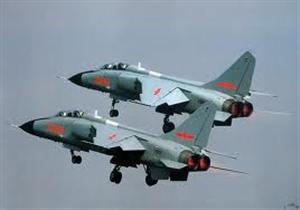Xian JH-7
Chinese Flying Leopard – JH-7
The Xian JH-7 Flying Leopard is Chinese fighter/bomber aircraft. The Air Force version of this aircraft was regarded as a tactical bomber and designated H-7, while the Navy version was viewed as a fighter-bomber and referred to as the JH-7.
By the early 1980s, after three years of intensive research of this JH-7 programme, the designers still had not reached a solution that would suit both ‘customers’ (Navy and AF). The aircraft’s powerplant was likewise undefined. Hence the MoD gradually began to downgrade the importance of the programme and could have cancelled it eventually, had not the Falklands War broken out in 1982. The Chinese military were so impressed by the actions of the Argentinean Navy’s Dassault Super Etendard strike aircraft armed with AM39 Exocet anti-shipping missiles against the Royal Navy that the naval lobby won the upper hand in the programme. From November 1982 onwards development of the naval Xian JH-7 was accelerated, while the H-7 bomber was put on the back burner and eventually abandoned altogether.
Another lucky turn in the Xian JH-7 programme came in early 1983 when the powerplant was finally chosen. Instead of the hitherto favoured WS-6 turbofan (which, as already mentioned, was hampered by insurmountable development problems) XAC selected the WS-9 – a licence-built version of the Rolls-Royce RB.168 Spey Mk 202. Fifty of these engines had been delivered to China back in 1975 and a licensing agreement with Rolls-Royce had been signed the following year. The choice of the WS-9 over the WS-6 was reportedly influenced by the fact that the MoD had assigned huge funds for the reconstruction of the Xian aircraft factory and the co-located engine plant which were to produce the Xian JH-7 and the WS-9 respectively.
 Thus, in the early 1980s the design was frozen and the detail stage began. The Xian JH-7 was a fairly large aircraft looking like a blend of the SEPECAT Jaguar and the Panavia Tornado IDS but being rather larger than either of them. Like the former type, it had shoulder- mounted moderately swept conventional wings and two-dimensional lateral air intakes with vertical airflow control ramps, boundary layer splitter plates and anti-surge doors. The wings had a kinked leading edge, wing sweep at quarter-chord being 55° inboard and 45° outboard. Like the Jaguar, there was a leading- edge dogtooth and a single boundary layer fence on each wing.
Thus, in the early 1980s the design was frozen and the detail stage began. The Xian JH-7 was a fairly large aircraft looking like a blend of the SEPECAT Jaguar and the Panavia Tornado IDS but being rather larger than either of them. Like the former type, it had shoulder- mounted moderately swept conventional wings and two-dimensional lateral air intakes with vertical airflow control ramps, boundary layer splitter plates and anti-surge doors. The wings had a kinked leading edge, wing sweep at quarter-chord being 55° inboard and 45° outboard. Like the Jaguar, there was a leading- edge dogtooth and a single boundary layer fence on each wing.
The forward and rear fuselage, on the other hand, were more like those of the Tornado – there was a large circular-section ogival radome and the crew sat in tandem under a common canopy on HTY-4 zero-zero ejection seats. Unlike the Tornado, which had a two-piece canopy, the Xian JH-7 featured individual aft-hinged sections for the pilot and the WSO with a fixed portion in between; the windshield incorporated a bulletproof windscreen. The engines were located well aft so that their nozzles were at the aft extremity of the fuselage, not ahead of the tail unit as on the Jaguar. The rear fuselage incorporated four airbrake panels.
The tail unit was basically similar to that of the Tornado, the stabilators being mounted rather low. However, the vertical tail appeared a bit too small for the aircraft’s size and was augmented by a large ventral fin. The twin- wheel main landing gear units were definitely ‘Jaguaresque’, featuring a levered suspension and retracting forward so that the wheels lay horizontally beneath the inlet ducts. The nose unit was unlike either of the western types, having twin wheels and retracting aft. The wheel brakes were augmented by a brake parachute housed at the base of the rudder.
 A notable feature of the Xian JH-7 was its KF-1 fly-by-wire control system.
A notable feature of the Xian JH-7 was its KF-1 fly-by-wire control system.
The JH-7 had seven external stores hardpoints, including two wingtip launch rails for PL-5B short-range AAMs. The aircraft was to carry the up to four of the new YJ-8 (C-801) ASMs developed by the China Haiying Electromechanical Technology Academy (CHETA). Alternatively, up to 20 250-kg (551- lb) bombs could be carried. Additionally, the aircraft had a 23-mm Type 23-111 twin-barrel cannon (a copy of the GSh-23L) with 200 rounds mounted low on the starboard side of the centre fuselage.

Comments are closed, but trackbacks and pingbacks are open.